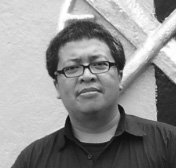Researching the jihadi movement in Indonesia is not easy. Darul Islam, Jema'ah Islamiyah and their ilk are clandestine movements. Their leaders and activists generally refuse interviews with people outside of their circles. Accordingly, before I tried to interview them, I first assembled information from various books, newspaper clippings and court documents.
Of these sources, interrogation depositions (called B.A.P. in Indonesian) provided the richest information, but were also the most difficult to obtain. Rich, because they contained extensive information on relevant events and on jihadi networks. Difficult, because of the poor state of the courts' archives. The filing system was so poor that at some courts the persons responsible for the archive did not know where the documents were located. Under these circumstances I generally offered to look for the documents myself. I spent weeks in the dark and humid warehouse of the Central Jakarta District Court looking for the decades-old interrogation depositions of the perpetrators of the Komando Jihad case. I went through the hundreds of thousands of interrogation dossiers from various cases one by one. It took almost a month of searching before I started to find the documents I needed.
It then took me months to study these written sources in detail, after which I began to understand the history, ideology and networks of jihadis in Indonesia. When I felt I had sufficient knowledge, I started to prepare to interview the perpetrators, activists and leaders of jihadi groups. These interviews were important to enrich and verify the information I had gathered. Before I began seeking interviews, an important step was to look for people who could put me in contact with the jihadis. These go-betweens introduced me to the interviewees. They played a crucial role in the interview process with jihadi leaders and activists. It was these go-betweens who were able to open the door to the dark and secret world of the jihadis. Without these go-betweens, the door would always remain shut for outsiders like me.
It wasn't too difficult for me to find these go-betweens. By chance, I had friends from school and university in Bandung who had joined Darul Islam. At first they were reluctant to help, but once they knew that I understood Darul Islam's history, and understood its ideology and networks – knowledge I had gained from the literature I had assembled – in the end they were willing to help. They started to introduce me to Darul Islam activists. These initial interviewees then introduced me to more senior Darul Islam figures, who had made history.
It was not easy to interview senior Darul Islam figures. They were generally elderly and their memories had started to fade. Additionally, each person told different versions of the same event. It was here that all the knowledge I gained from the various literature, in particular the interrogation depositions, was very useful. I was able to revive the history of their past by referring to the interrogation depositions. Interrogation depositions were also useful to verify the various versions of events provided by interviewees, and vice versa. Frequently this entailed conducting a dozen or more interviews with a single source. For instance, I interviewed Gaos Taufik, who was involved in Komando Jihad, more than 15 times.
It was here though that I experienced the most enjoyable and stimulating challenge, namely to put back together the puzzle of the history of the jihadi movement by using this verified information. It was extremely enjoyable, because the period between the fall of Darul Islam in 1962 and the formation of Jema'ah Islamiyah in 1993 was a dark and undocumented period of history. The most stimulating aspect for me was the feeling that I was solving as yet unanswered historical puzzles. Nothing was more pleasing though than to see that the majority of my sources agreed with my reconstruction of the history and ideology of this jihadi movement. One interviewee even said, 'With this book it is like I'm looking at a photo album of the jihadi movement in Indonesia, neatly arranged in chronological order. Various events that I experienced are portrayed accurately and in detail in this book.'
The Roots of Terrorism in Indonesia by Solahudin (translated by Dave McRae) is available now from NewSouth.


